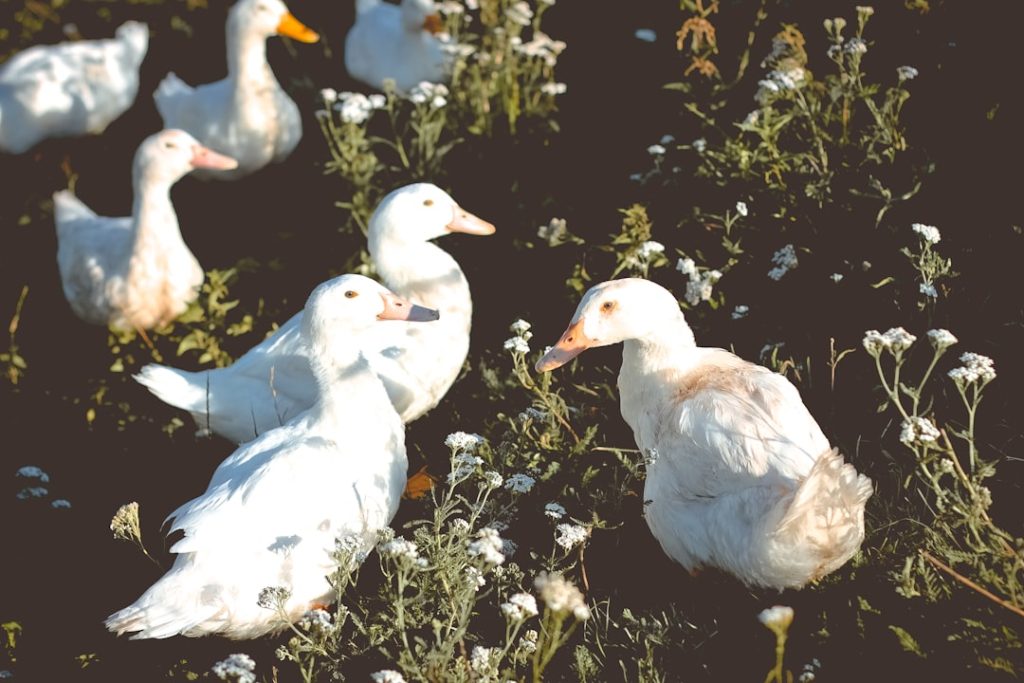The duck meat industry is a significant sector of the poultry industry, providing a valuable source of protein for consumers around the world. Duck meat is known for its rich flavor and tender texture, making it a popular choice for many culinary dishes. In recent years, the demand for duck meat has been steadily increasing, driven by the growing interest in diverse and exotic cuisines. This has led to an expansion of duck meat production and a focus on improving the efficiency and sustainability of duck farming practices.
Duck meat production involves raising ducks specifically for their meat, as opposed to other purposes such as egg production or ornamental purposes. The process of raising ducks for meat involves careful management of breeding, housing, feeding, and health care to ensure the production of high-quality meat. Additionally, processing and marketing are crucial aspects of the duck meat industry, as they determine the final product that reaches consumers. Understanding the various aspects of duck meat production is essential for farmers and producers to successfully navigate this industry and meet the demands of the market.
Table of Contents
Key Takeaways
- The duck meat industry is a growing sector of the poultry industry, with increasing demand for duck meat products.
- Selecting the right duck breed for meat production is crucial for achieving high-quality meat and efficient production.
- Proper housing and feeding of ducks is essential for their growth and development in meat production.
- Understanding the breeding and reproduction of meat ducks is important for maintaining a sustainable and productive flock.
- Health and disease management is critical in meat duck production to ensure the well-being of the ducks and the quality of the meat products.
- Proper processing and butchering of meat ducks is important for maintaining food safety and quality standards.
- Marketing and selling duck meat products requires understanding consumer preferences and developing effective marketing strategies.
Selecting the Right Duck Breed for Meat Production
Selecting the right duck breed is a crucial decision for meat production. Different duck breeds have varying characteristics that can impact meat quality, growth rate, and overall productivity. Some popular duck breeds for meat production include Pekin, Muscovy, and Moulard ducks. Pekin ducks are known for their rapid growth and high feed conversion rates, making them a popular choice for commercial meat production. Muscovy ducks are prized for their lean and flavorful meat, while Moulard ducks are a crossbreed known for their large size and high-quality meat.
When selecting a duck breed for meat production, it is important to consider factors such as growth rate, feed efficiency, disease resistance, and market demand. Additionally, climate and environmental conditions should also be taken into account, as certain breeds may be better suited to specific regions. Ultimately, choosing the right duck breed is essential for maximizing meat production and meeting the needs of consumers and the market.
Housing and Feeding Ducks for Meat Production
Proper housing and feeding are essential components of duck meat production. Ducks raised for meat require adequate space, shelter, and access to clean water and feed to ensure their health and well-being. Housing for meat ducks should provide protection from predators, extreme weather conditions, and disease transmission. It should also allow for proper ventilation and drainage to maintain a clean and comfortable environment for the ducks.
Feeding ducks for meat production involves providing a balanced diet that meets their nutritional requirements for growth and development. A high-quality commercial feed formulated specifically for meat ducks is often used to ensure optimal growth rates and meat quality. Additionally, access to clean water is crucial for ducks, as they require water for digestion and overall health. Proper feeding management is essential to maximize growth and meat production while minimizing feed waste and costs. Overall, providing suitable housing and a nutritious diet is essential for successful duck meat production.
Breeding and Reproduction of Meat Ducks
Breeding and reproduction play a critical role in the production of meat ducks. Breeding programs are designed to select ducks with desirable traits such as growth rate, feed efficiency, and meat quality to improve the overall productivity of the flock. Artificial insemination may be used to control breeding and ensure genetic diversity in the flock. Additionally, managing the reproductive health of ducks is essential to maximize fertility and hatchability.
The reproductive cycle of ducks involves mating, egg laying, and incubation. Proper management of these processes is essential to ensure a consistent supply of ducklings for meat production. Providing suitable nesting areas, monitoring egg production, and maintaining optimal environmental conditions are important aspects of reproductive management. Additionally, incubation techniques such as natural brooding or artificial incubation may be used to hatch ducklings. Overall, effective breeding and reproduction practices are essential for maintaining a healthy and productive flock of meat ducks.
Health and Disease Management in Meat Duck Production
Health and disease management are critical aspects of duck meat production. Ducks raised for meat are susceptible to various diseases and health issues that can impact their growth and overall productivity. Preventative measures such as vaccination, biosecurity protocols, and regular health monitoring are essential to minimize the risk of disease outbreaks. Additionally, providing a clean and hygienic environment, proper nutrition, and access to clean water are important factors in maintaining the health of meat ducks.
Common health issues in meat ducks include respiratory infections, parasitic infestations, and metabolic disorders. Early detection and prompt treatment of these issues are crucial to prevent significant losses in meat production. Working with a veterinarian to develop a comprehensive health management plan is essential for maintaining the well-being of the flock. Overall, prioritizing health and disease management is essential for ensuring the success of duck meat production.
Processing and Butchering Meat Ducks

Processing and butchering are important steps in the production of duck meat. Once ducks reach the desired weight and maturity, they are ready for processing. This involves slaughtering the ducks in a humane manner and preparing them for consumption. Proper handling and processing techniques are essential to ensure food safety and quality.
After slaughtering, ducks are typically scalded, plucked, eviscerated, and chilled to prepare them for further processing or packaging. The process of butchering involves dividing the carcass into various cuts such as breast, legs, wings, and offal. Proper sanitation and hygiene practices are crucial during processing to prevent contamination and ensure food safety.
In commercial operations, processing facilities must comply with food safety regulations and standards to produce safe and high-quality duck meat products. Small-scale producers may also need to adhere to local regulations regarding processing and butchering practices. Overall, proper processing and butchering techniques are essential for producing safe and marketable duck meat products.
Marketing and Selling Duck Meat
Marketing and selling duck meat products require careful planning and execution to reach consumers effectively. Understanding consumer preferences, market trends, and distribution channels is essential for developing a successful marketing strategy. Differentiating duck meat products based on quality, flavor, or production methods can help attract consumers looking for unique and high-quality food options.
Selling duck meat products may involve direct sales to consumers through farmers’ markets or online platforms, as well as wholesale distribution to restaurants, retailers, or specialty food stores. Developing strong relationships with buyers and understanding their specific needs can help producers effectively market their products. Additionally, branding, packaging, and labeling play a crucial role in attracting consumers and communicating the value of duck meat products.
Promoting the nutritional benefits, culinary versatility, and sustainability of duck meat can help create consumer awareness and demand. Utilizing social media, food events, tastings, or cooking demonstrations can also help raise the profile of duck meat products in the market. Overall, effective marketing and selling strategies are essential for successfully promoting duck meat products to consumers.
In addition, partnering with chefs and restaurants to feature duck meat dishes on their menus can also help increase exposure and drive consumer interest. Highlighting the unique flavor profile and health benefits of duck meat, as well as its potential for use in a wide range of cuisines, can further attract consumers. By educating the public about the nutritional value and culinary appeal of duck meat, the industry can work towards building a strong market for this sustainable and delicious protein option.
If you’re interested in breeding ducks for meat, you may also want to explore the world of geese breeding. Poultry Wizard has a helpful article on the incubation period for goose eggs, which can provide valuable insights into the process of hatching and raising geese for meat production. Check out their article on the incubation period for goose eggs to expand your knowledge in poultry farming.
FAQs
What are the benefits of breeding ducks for meat?
Breeding ducks for meat can be beneficial as ducks are known for their high feed conversion rates, meaning they can efficiently convert feed into meat. Additionally, duck meat is considered to be a healthy and nutritious protein source.
What are some popular duck breeds for meat production?
Some popular duck breeds for meat production include the Pekin duck, the Muscovy duck, and the Moulard duck. These breeds are known for their meat quality and growth rates.
What are some important considerations for breeding ducks for meat?
When breeding ducks for meat, it is important to provide a suitable environment for the ducks to thrive, including access to clean water, proper nutrition, and adequate space for exercise. Additionally, proper disease management and biosecurity measures are crucial for successful meat production.
How long does it take to raise ducks for meat?
The time it takes to raise ducks for meat can vary depending on the breed and the desired market weight. Generally, ducks can be ready for processing between 7-10 weeks of age, although some breeds may take longer to reach optimal meat production.
What are some common challenges in breeding ducks for meat?
Common challenges in breeding ducks for meat include disease management, ensuring proper nutrition, and maintaining a suitable environment for the ducks. Additionally, market demand and pricing can also pose challenges for duck meat producers.
Meet Walter, the feathered-friend fanatic of Florida! Nestled in the sunshine state, Walter struts through life with his feathered companions, clucking his way to happiness. With a coop that’s fancier than a five-star hotel, he’s the Don Juan of the chicken world. When he’s not teaching his hens to do the cha-cha, you’ll find him in a heated debate with his prized rooster, Sir Clucks-a-Lot. Walter’s poultry passion is no yolk; he’s the sunny-side-up guy you never knew you needed in your flock of friends!







